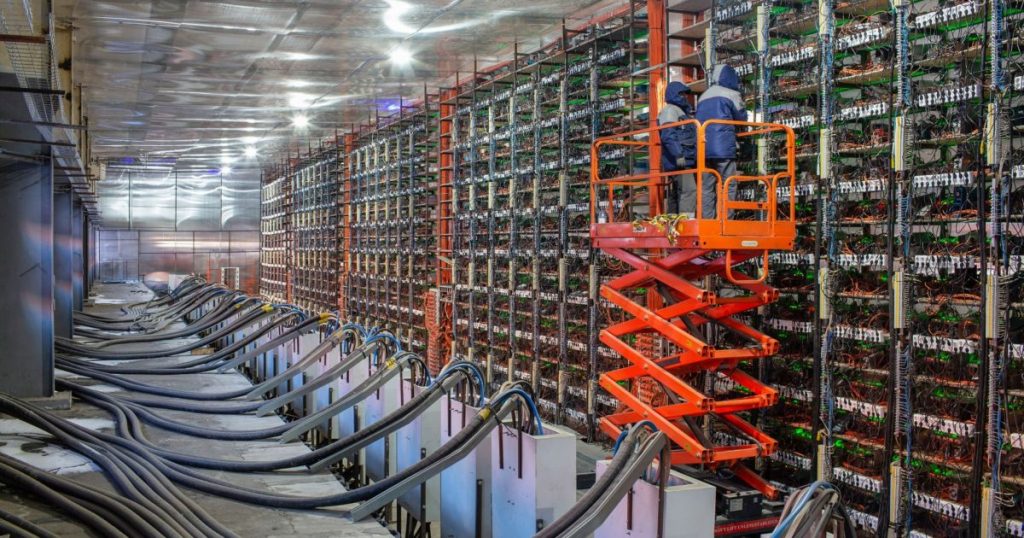Table of Contents
Have you heard of China’s Crackdown on Crypto Mining? In March, Beijing called for measures to end Bitcoin mining amidst concerns of its environmental impact. As a result, Crypto miners living in Beijing have been forced to flee China for regions like North America.
Here’s the breakdown of China’s Crackdown on Crypto Mining
The crackdown became more intense in April when authorities in Sichuan ordered cryptocurrency miners to shut down operations. Sichuan is a hydropower-rich province in China. Inner Mongolia and Xinjiang had shut down operations even before Sichuan. The severe Beijing crackdown did not spare any Bitcoin mining hub in China. The province had hoped to let miners use abundant hydropower over summer.
Xinjiang, Inner Mongolia, and Sichuan were attractive locations for cryptocurrency miners. There were abundant water resources to provide cheap electricity.
The crackdown has made the price of graphics cards drop drastically, thus, making the critical component in the mining operation much more affordable in China. Therefore, leaving miners with fewer places to set up shop. Graphic cards are a significant component of cryptocurrency mining because of the extra processing power they provide for hashing. The graphic cards also help with the complex computations used to create more digital currency and verify transactions on Blockchain.
When the miner controls have high computational power, it has better chances of beating others by adding new blocks to the Blockchain and obtaining awesome rewards.

Engineers on a cherry picker inspect mining rigs at the CryptoUniverse cryptocurrency mining farm in Nadvoitsy, Russia, on Thursday, March 18, 2021. The rise of Bitcoin and other cryptocurrencies has prompted the greatest push yet among central banks to develop their own digital currencies. Photographer: Andrey Rudakov/Bloomberg
The crackdown will cause more than 90% of China’s bitcoin mining capacity to shut down. Shut down will be terrible news for Bitcoin miners in China but will be fantastic news for miners in other countries.
Effects of China’s crackdown on Crypto Mining
At least 75% of all global Bitcoin mining takes place in China. Therefore, the chain crackdown will affect the whole world’s cryptocurrency mining, hence, affect the world’s economy.
Xinjiang and Inner Mongolia have asked all their miners to shut down their operations earlier this month in response to the crackdown. Likewise, Sichuan had to order a halt on cryptocurrency mining operations mid this month.
Sichuan went a step further and asked their electricity providers to look into their clients and know where they had anything to do with mining operations.

The three provinces made a compelling portion of the Bitcoin network hash rate and measured the network’s computational power until the crackdown. According to the Cambridge Bitcoin electricity consumption index, Xinjiang accounted for 36% from April 2020. China as a whole accounted for 65% of the network hash rate.
The Chinese crackdown has made Chinese miners look for other alternatives. Some miners have suspended their operations entirely while others are planning to move overseas. As a result, the crackdown will also reduce network activity and impact Bitcoin mining activity.
What are the effects of China’s Crackdown on Crypto Mining Equipment?
When one hears of Bitcoin mining, he/she rush to think that it is like gold mining where you use shovels and picks but that is not the case. Cryptocurrency mining has nothing to do with that. Instead, it is the process of justifying cryptocurrency transactions. It is the creation of a new coin by solving a complex computational math problem. Crypto mining is also the process that maintains a ledger of transactions upon which a coin is based. High-end and complex machinery is being used to speed up the mining process. Hence, crypto mining has become so sophisticated.
Alysee Killen, the founder and managing partner of Bitcoin-focused venture firm Stillmark, said that being the first miner to mine a new block is a game of random chances.
In the wake of the harsh crackdown, the total hash rate and the processing power of the Bitcoin networks appear to have dropped rapidly.

With more Bitcoin miners having to shut down their operations, other miners’ share of the network will increase hypothetically. Hence, making mining much more profitable.
Kevin Zhang, the Crypto Mining Foundry vice president, told CNBC that the difficulty would adjust downwards as the hash rate falls off the network. However, he went ahead and said the hash rate that remains active on the network would get more for their proportional share of the mining rewards.
How China’s crackdown will benefit North America
China’s crackdown anticipates helping shift the industry center of gravity from Asia to North America. As a result, mining will become a lot easier and profitable for North America crypto miners.
North America will also dominate the cryptocurrency market that China has always dominated.
Blockchain.com shows that the hash rate has drastically dropped by 50% from its peak in mid-April. It had never been this low since November last year.
The crackdown will be favorable to the Hive Blockchain technologies, which will no longer have Chain to compete with for precious blocks. However, the crackdown will also favor the United States and Canadian Crypto miners.
Why the ban on crypto miners in China?
On the 21st of June this year, China’s central bank ordered banks to crack down on cryptocurrency trading. The central bank said that cryptocurrency had distorted the standard order of the economy. It went ahead and said that cryptocurrency had increased the risks of illegal activities like money laundering and cross-border illicit transfer of assets. Financial fraud and investment scams have increased in China.
Bitcoin has lured the attention of cryptocurrency investors, climate campaigners, and energy experts. This is because cryptocurrency is an activity that consumes a lot of energy.
Several reports claim that cryptocurrency energy consumption has been spirally out of control. Mining cryptocurrency consumes a lot more energy than using it. However, once the coins have been issued, it requires minimal energy to validate transactions.
Why China’s Crackdown is not enough to stop cryptocurrency
Humongous concrete data centers plugged permanently into power plants and telephone exchanges maintain much of online life. The infrastructure behind internet-based cryptocurrencies like Bitcoin and Ethereum is like a rusty traveling circus. Unfortunately, the traveling circus is on the road at the moment.
Bitcoin relies on a network of billions of miners. About 70% of the miners are in China.
The increased cryptocurrency prices have encouraged Chinese miners to mine coal instead, threatening President Xi Jinping’s climate goals.
Hydropower plants go on sale in china due to crackdown on mining
Owners of small hydroelectric power plants are being pushed to offload their assets since the demand for cheap is drying up due to the crypto mining crackdown.
Since May, the number of advertisements on the most popular second-hand e-commerce platform, Xianyu, for small-scale hydro plants with a capacity of 50 Megawatts has increased.
Hydro plants with 50 megawatts are small compared to enormous projects like Three Gorge Dam, which has 22,500 megawatts. Areas like the Yangtze River economic belt, which stretches nine Chinese provinces, had around 25,000 of the 50 megawatts of hydro plants by the end of 2020.
An alternative energy source of crypto mining
Sean Ratka from the International Renewable Energy Agency wrote that renewables and energy efficiency are directing the rising energy usage of cryptocurrency. In addition, the increasing energy usage of blockchains has been facing increased public investigation.
Our verdict
China’s economy will be much affected by the crackdown as much as the cryptocurrency market will be affected.
Chinese investors should escape China and run to countries that are more likely to have better chances with cryptocurrency, like North America.
Learn more by joining the conversation.


No Comment